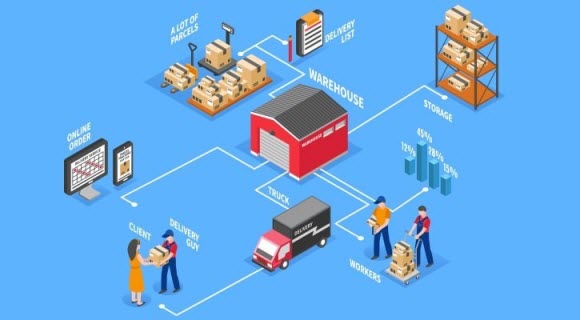E-commerce development has seen a significant rise in innovations, particularly catering to the Australian consumer market. With the increasing popularity of online shopping in Australia, businesses are constantly looking for new ways to enhance the e-commerce experience for their customers. One key innovation is the use of AI and machine learning algorithms to personalise the shopping experience for Australian consumers. By analyzing data such as browsing history and purchase behaviour, e-commerce platforms can recommend products that are tailored to the individual preferences of each customer.
Another important innovation in e-commerce development for the Australian market is the focus on mobile optimization. With a large percentage of Australians using smartphones to shop online, e-commerce websites must be fully optimized for mobile devices. This includes ensuring fast loading times, easy navigation, and a seamless checkout process on mobile platforms.
Additionally, there has been a growing trend towards sustainability and ethical practices in e-commerce development in Australia. Consumers are becoming more conscious of the environmental impact of their purchases, leading businesses to adopt sustainable practices such as using eco-friendly packaging and offering products that are ethically sourced. By catering to these preferences, e-commerce platforms can attract a larger customer base and build trust with environmentally conscious consumers.
Overall, innovations in e-commerce development play a crucial role in catering to the Australian consumer market. By embracing technology, focusing on mobile optimization, and adopting sustainable practices, businesses can create a seamless and personalized shopping experience that meets the evolving needs and preferences of Australian consumers.
In the ever-evolving realm of e-commerce, businesses are constantly seeking innovative ways to cater to the diverse needs and preferences of consumers around the globe. Australia, with its unique market landscape and consumer behaviour, presents a compelling case study for understanding and implementing cutting-edge e-commerce developments. From personalized shopping experiences to mobile commerce trends and stringent data security measures, the Australian e-commerce scene is a hotbed of innovation.
Overview of E-commerce Landscape in Australia
Historical Evolution of E-commerce in Australia
Grab your surfboard and let’s ride the digital wave Down Under! E-commerce in Australia has come a long way from the days of dial-up internet. Aussies have embraced online shopping like a koala hugging a eucalyptus tree.
Current Market Size and Growth Trends
The e-commerce scene in Australia is blowing up faster than a shrimp on the Barbie! With more Aussies turning to online shopping for their Vegemite fix, the market size is expanding like a kangaroo’s pouch. The growth trends are as promising as a sunny day at Bondi Beach.
Understanding the Australian Consumer Behavior
Cultural Influences on Consumer Preferences
Throw another cultural influence on Barbie, mate! Aussie consumer behaviour is as diverse as the Outback. From beach-loving surfers to city slickers, understanding the cultural quirks that drive consumer preferences is crucial for e-commerce success.
Shopping Habits and Preferences of Australian Consumers
Aussie shoppers are a unique breed – they love a good bargain almost as much as a cold beer on a hot day. Their shopping habits range from leisurely browsing to quick clicks, making it essential to cater to their preferences for a fantastic e-commerce experience.
Emerging Trends in E-commerce Development
Artificial Intelligence and Machine Learning in E-commerce
AI and machine learning in e-commerce are hotter than a scorcher in the Outback. From personalized recommendations to efficient customer service, these technologies are revolutionizing the online shopping experience faster than you can say “G’day, mate!”
Augmented Reality and Virtual Reality Experiences
Step into the future of e-commerce with augmented reality and virtual reality experiences. Aussies are diving into immersive shopping experiences like they’re exploring the Great Barrier Reef. These technologies are taking online shopping to new dimensions, making it as exciting as a crocodile safari.

Personalization and Customization in E-commerce for the Australian Market
Importance of Tailored Shopping Experiences
In the land of veggie sausages and fairy bread, personalization is key! Aussie shoppers crave tailored shopping experiences like they crave Tim Tams. Understanding their preferences and needs is crucial for winning their hearts (and wallets).
Implementing Personalization Strategies Effectively
When it comes to personalization, throwing another shrimp on the Barie won’t cut it. Implementing effective strategies like dynamic content and targeted promotions is essential for wooing Australian consumers. Get it right, and you’ll be as popular as a koala in a gum tree!
Mobile Commerce and Its Impact on E-commerce in Australia
Rise of Mobile Shopping Apps and Responsive Websites
Mobile commerce is booming Down Under, with Aussie consumers increasingly turning to their smartphones and tablets for shopping. The convenience of mobile shopping apps development and responsive website design have revolutionized the e-commerce landscape in Australia, making it easier than ever for customers to browse and buy on the go.
Mobile Payment Solutions and Security Considerations
With the rise of mobile commerce comes the need for secure and seamless payment solutions. Australian e-commerce developers are prioritizing mobile payment integrations to ensure smooth transactions for consumers. However, with great convenience comes great responsibility – ensuring robust security measures to protect sensitive financial data is crucial in the mobile commerce realm.
Logistics and Fulfillment Innovations in E-commerce
Same-day delivery and Click-and-Collect Services
Instant gratification is the name of the game in e-commerce logistics in Australia. Same-day delivery and click-and-collect services are becoming increasingly popular among consumers who crave speedy shipping options. E-commerce businesses are innovating to meet these demands and provide a seamless delivery experience to their customers.
Sustainable Packaging Practices in E-commerce Logistics
In a world increasingly conscious of environmental impact, sustainable packaging practices are gaining traction in Australian e-commerce. From eco-friendly materials to minimalist packaging designs, businesses are finding innovative ways to reduce their carbon footprint and appeal to eco-conscious consumers.

Importance of Data Security and Privacy in E-commerce for Australian Consumers
Regulatory Frameworks and Compliance Requirements
Data security and privacy are paramount in the e-commerce world, especially for Australian consumers. With stringent regulatory frameworks and compliance requirements, e-commerce businesses must prioritize safeguarding customer data to build trust and credibility.
Building Trust through Transparent Data Handling Practices
Transparency is key when it comes to data handling in e-commerce. By being open about how customer data is collected, stored, and used, businesses can build trust with Australian consumers and demonstrate their commitment to protecting privacy. Implementing clear data handling practices can go a long way in fostering customer loyalty and satisfaction. As e-commerce continues to shape how we shop and interact with brands, the dynamic landscape in Australia serves as a testament to the rapid pace of technological advancements and consumer demands. By embracing these innovations and prioritizing customer-centric strategies, businesses can stay ahead in the competitive e-commerce space, delivering seamless and personalized experiences that resonate with the Australian consumer. With a focus on adaptability, creativity, and a deep understanding of consumer behaviour, the future of e-commerce development in Australia holds tremendous promise for both businesses and consumers alike.
Frequently Asked Questions About E-commerce Development
How important is personalization in e-commerce for Australian consumers?
Personalization plays a crucial role in the e-commerce experience for Australian consumers, who value tailored recommendations and customized shopping journeys. By catering to individual preferences and providing relevant content, businesses can enhance customer loyalty and drive conversion rates.
What are some key data security considerations for e-commerce businesses targeting the Australian market?
E-commerce businesses operating in Australia must comply with strict data privacy regulations, such as the Australian Privacy Principles (APPs). Ensuring secure payment gateways, implementing robust encryption protocols, and transparently communicating data handling practices are essential to building trust with Australian consumers.
How are mobile commerce trends shaping the e-commerce landscape in Australia?
The rise of mobile shopping apps and responsive websites has transformed the way Australians shop online, with convenience and accessibility driving the shift towards mobile commerce. Businesses that optimize their platforms for mobile devices and offer seamless mobile payment solutions are well-positioned to capitalize on this trend.
What unique challenges do Australian consumers face when shopping online?
Shopping online in Australia comes with its own set of unique challenges. One major issue for consumers is the high cost of shipping, especially when buying from international websites. This often results in significantly higher prices than what can be found in physical stores. Additionally, the vast size of the country can lead to longer delivery times and increased shipping fees, especially for those living in more remote areas. Another challenge is navigating the different rules and regulations when purchasing goods from overseas, which can sometimes lead to unexpected fees or delays at customs. Lastly, due to the distance between Australia and many other countries, returns can be a complicated process, requiring extra time and money for shipping items back. Overall, while online shopping offers convenience and a wide selection of products, Australian consumers must be mindful of these challenges before making their purchases.











